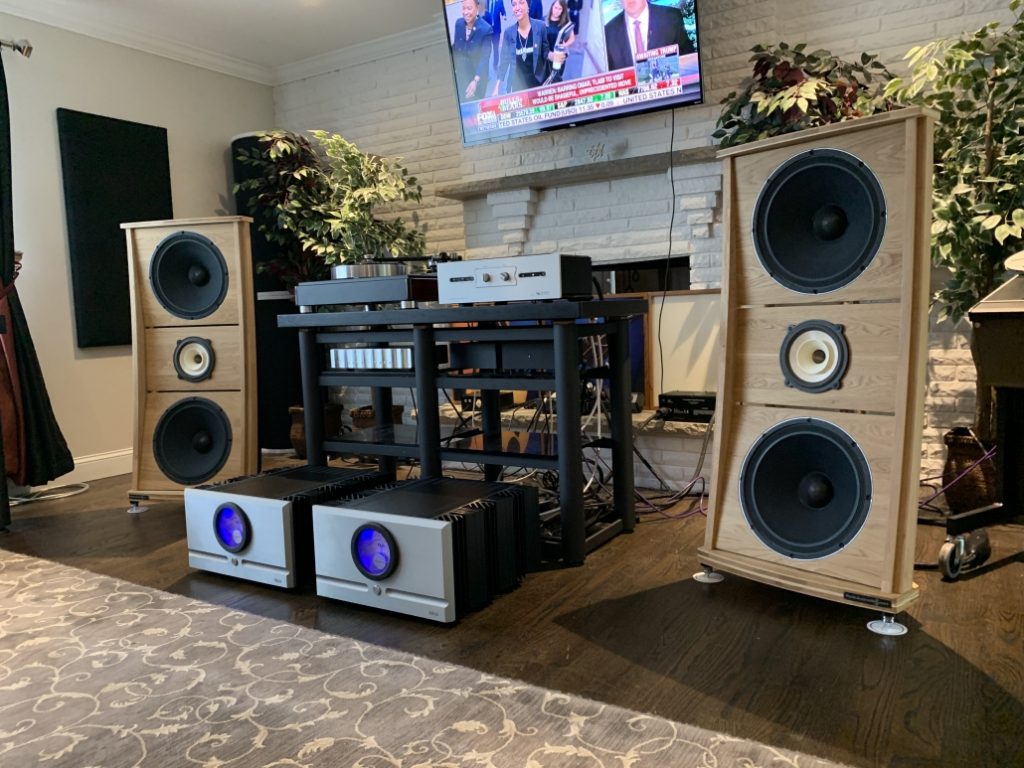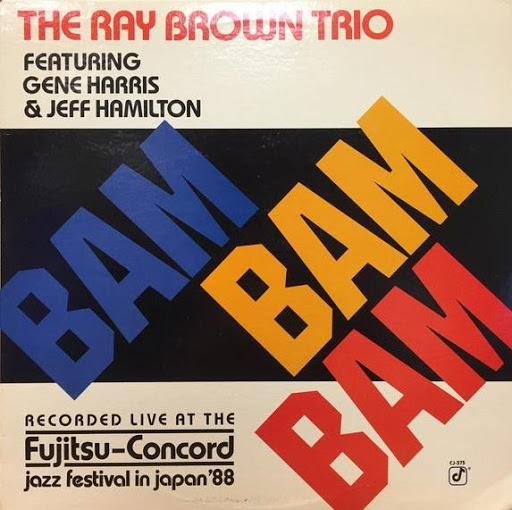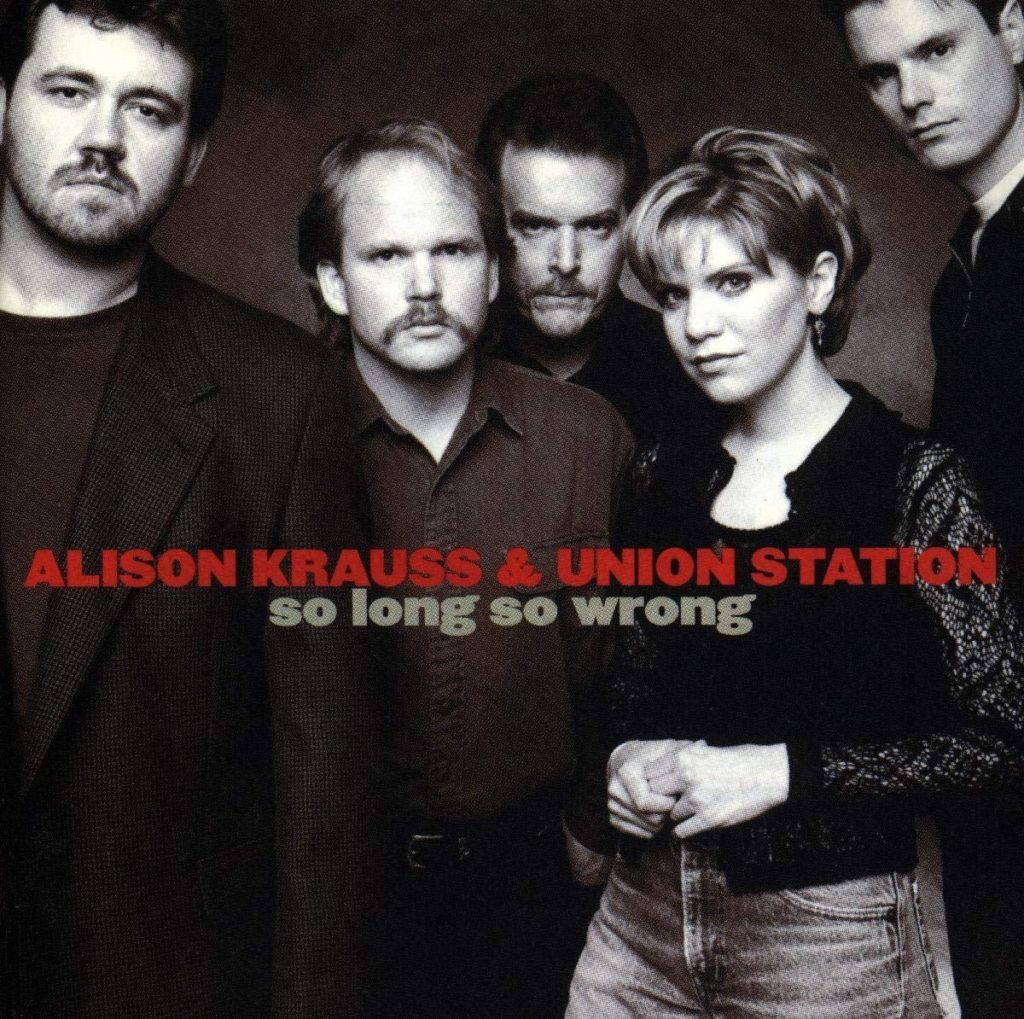
Note: Find out more about how the Trio15 Classic loudspeakers are made in Part 1 of this review here.
Let’s listen, or at least let me describe in this post what I heard when I listened to these speakers. It didn’t take long for me to be seduced by the PureAudioProject Trio15 Classic loudspeakers. If you didn’t read Part 1 of this review, you can look at it here. Part 2 is all about listening, so let’s jump in.
These are simply some of the most enjoyable speakers I have had the pleasure of auditioning. The exquisite midrange that blends seamlessly with the woofers quickly drew me in. The music is built from the midrange on out, but the bass is not to be denied. In my room, it measured flat to 29 Hz and continued to contribute down to 25 Hz. It is very tight, fast, and never boomy. I didn’t listen to a single recording where these speakers left me wanting more bass.
While not the last word in treble extension, I never felt like I was missing anything. The top end was open and airy with a very natural quality. The Trio15 Classics offer up a large soundstage with excellent width and depth that is strikingly coherent. These are speakers that honor the music.
You can also easily connect with these speakers at lower listening levels. Even at low volume, the Trio15 Classic speakers easily reveal and don’t bury dynamic contrasts and low-level details. I didn’t feel the need to turn up the volume to achieve a satisfying connection with the music. On the other hand, the Trio15 Classics don’t shy away from cranking it up. With the four 15” woofers and open baffle design, these speakers can easily energize a room with your favorite rock recording.
Let’s listen….for the Love of Music

BAM BAM BAM, this album is a live recording of a 1988 concert in Tokyo. With Ray Brown on bass, Gene Harris on piano, and Jeff Hamilton on drums, can you say “Super Group”?
I love this entire live performance. Every song commanded my attention, but the highlight for me is Gene Harris’ featured version of “Summertime”. Each time I listen to it I feel like I am getting on a rollercoaster, the safety bar has been lowered and I am ready for a 7-minute musical thrill ride! The piano opening to the song is the climb up the first hill and then I am off and running. Gene’s piano tone was spot on, and when he “attacked” the keys, I could feel the energy.
Ray Brown’s bassline is tight, focused, and never too full. I could easily hear him “working” the bass. Brown has a way of being subtle yet being the driving force of the music. Gene Harris simply kills it throughout the cut making the rollercoaster ride a real musical event.
At about 5:30 into the cut, the audience starts to clap in unison, and with the open baffle Trio15 Classic speakers playing, my room became the venue. I felt as if I should join in. At the end of the cut, there are about 20 seconds of applause where I could hear the band and the audience talking. I don’t know about you, but the “live” interaction of the audience makes me feel as if I am there. The Trio15 Classics masterfully reproduced this musical experience in my room.
Something More Subtle

For something more subtle, I go with Allison Krauss and Union Station’s album, So Long So Wrong. Krauss’ voice presents a real challenge to speakers with the cut “Looking In the Eyes of Love”. I have heard this cut hundreds of times and I have to say that the Trio15 Classics with the Voxativ PiFe driver was one of the most satisfying. These speakers presented her vibratos and challenging upper range ever so naturally. There was no edge or glare, and yet it was totally open and exposed.
Along with those traits comes a richness and body to her voice that many speakers seem to omit. The other area I pay attention to in this song is when the band members harmonize with her. While many speakers can resolve the individual band members, few speakers I have heard can reveal the harmonic tone of the members blended with Krauss. The Trio15 Classics handled this easily.
Conclusion
The Trio15 Classics combine the wonderful characteristics of Open Baffle design with world-class drivers. I listened to these speakers for 12 weeks, and the qualities I mentioned above were consistent. It didn’t matter what I threw at them, the Trio15 Classics proved they were able to render it in a truthful, musically satisfying, and emotionally involving way.
By now you may have gathered that I enjoyed my time with these speakers and you would be correct. Many late-night listening sessions were driven more by the desire to enjoy the musical experience than to critically evaluate the speakers. Numerous times I would walk into the room with the intent of evaluating the speaker only to have the session derailed by my desire to just listen to music.
These speakers are not the kind that put you sitting at the mixing board and deconstructing the music. This speaker puts you squarely in Row 10 of the performance. That’s close enough to enjoy musical details but far enough back to understand how it all works together. It is a speaker that presents the music as an amalgamation of notes, tones, and harmonics whose sum is greater than the parts that make it up.
If you are looking for a speaker that you can listen to for hours on end, one that has a better chance than most of working well in your room, one that gives you the ability to fine-tune it with different components, then look no further than the PureAudioProject Trio15 Classics. What more could you ask for in a speaker? As I think about it, “Classic” could not have been a better choice for the name of this speaker. I feel it is destined to become one. Very Highly Recommended!
Note: Find out more about how the Trio15 Classic loudspeakers are made in Part 1 of this review here.
Technical Data
Enclosure: Trio 15 Classic
Woofers: PureAudioProject OB-15ANEO
Main Driver: Voxativ AC-1.6 or Voxativ PiFe
Sensitivity: 96 dB
Impedance: 8 Ohm
Frequency Response: 32hz – 20Khz ( in a typical room)
Size: W:23.5″/56cm H:49″/125cm D:15″/38cm
Price in the US
Trio15 Classic w/ Voxativ AC-1.6: $7,990
Trio15 Classic w/ Voxativ AC-PiFe: $9,990
Associated Equipment Used in This Review
ANALOG SOURCE:
AMG Viella 12JT Turbo turntable /tonearm & VIV Labs Rigid Float Tonearm
Benz Micro LP-S MR cartridge & DS Audio Master One cartridge
HANA ML Mono MC Cartridge, Denon 103R
PHONOSTAGE:
DS Audio Master 1 phono EQ
Vinnie Rossi L2i-SE Phono module
PS Audio Stellar Phono
DIGITAL SOURCES:
Aurender S-10 server/streamer
Innuos Phoenix USB reclocker
Vinnie Rossi L2i SE DAC2
McCormack DAC-1 Platinum Signature
McCormack SST-1 CD transport
Steve McCormack Signature CD Player TDA-1541a based
OPEN REEL:
Studer A 810 with Flux Magnetic Heads optically aligned by JFR Magnetics and direct-wired into a King/Cello tape preamp
INTEGRATED AMPLIFIER:
Vinnie Rossi L2i SE
LINE STAGE:
The Truth v.3 (passive), Luminous Audio Axiom II Walker Mod (passive)
Vinnie Rossi L2iSE line out
POWER AMPLIFIERS:
Pass Labs SIT 3
SMC Audio DNA-1 Platinum, PS Audio M1200 monoblocks
SPEAKERS:
Acoustic Zen Crescendo II
PureAudio Project Trio 15Classic
CABLES:
Acoustic Zen, Audience
Triode Wire Labs
ASI Liveline
Analysis Plus
A/C POWER:
Dedicated 20 amp lines
Audioquest Niagara 5000
P.I. Audio UberBUSS
Outlets from Audience, Jena Labs, P.I. Audio
ACCESSORIES:
SMc Audio UFO Isolation Base
Stillpoints Ultra’s Apertures & LPI
VPI Bricks
Cardas Myrtle Blocks
DS Audio ION-001


I am interested in these speakers!
They seem to hit the right points of interest when I
Want definitive open sound stage and immerse projection
Hi Martin….
Thanks for reading The Audio Beatnik …
Stay tuned for an upcoming review on the Pure Audio Project Trio 15 Coax..
Enjoy the Music !!
Ken